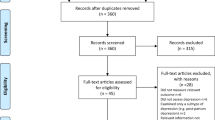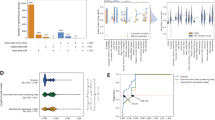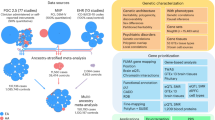Abstract
The aim of this study was to evaluate the potential association of urinary Bisphenol A (BPA) levels with estrogen receptor alpha (ESR1) promoter % methylation and relative telomere length in a sample of 482 participants. Urinary BPA concentration was measured using organic phase extraction followed by high performance liquid chromatography mass spectroscopy. Peripheral blood ESR1 promoter % methylation and relative telomere length were measured using direct bisulfite sequencing and real-time polymerase chain reaction, respectively. The mean ± SD urinary BPA concentration adjusted for urinary creatinine was 2.90 ± 4.81 (μg/g creatinine) with a median of 1.86 μg/g creatinine (min–max: <LOD −69.85). There was a potentially non-monotonic relationship between adjusted urinary BPA concentrations and ESR1 promoter % methylation in men. As a matter of fact, for the lowest tertile of ESR1 promoter % methylation, the OR and 95% CI of the middle and highest tertiles of urinary adjusted BPA were 2.54 (1.01–6.39) and 1.64 (0.55–4.86) when compared to the lowest BPA tertile, respectively. After adjustment for potential confounders, similar results remained in men and appeared in the whole cohort. As for relative telomere length, there was a significant trend whereby higher adjusted urinary BPA concentrations were significantly associated with shorter relative telomere length in females. For instance, for the shortest relative telomere length tertile, the OR and 95% CI of the middle and highest tertiles of urinary adjusted BPA were 2.91 (1.38–6.16) and 3.19 (1.57–6.49) when compared to the lowest BPA tertile, respectively. This trend remained significant after adjustment for potential confounders.
This is a preview of subscription content, access via your institution
Access options
Subscribe to this journal
Receive 6 print issues and online access
$259.00 per year
only $43.17 per issue
Buy this article
- Purchase on Springer Link
- Instant access to full article PDF
Prices may be subject to local taxes which are calculated during checkout

Similar content being viewed by others
References
Chen D, Kannan K, Tan H, Zheng Z, Feng YL, Wu Y, et al. Bisphenol analogues other than bpa: environmental occurrence, human exposure, and toxicity-a review. Environ Sci Technol. 2016;50:5438–53.
Lang IA, Galloway TS, Scarlett A, Henley WE, Depledge M, Wallace RB, et al. Association of urinary bisphenol A concentration with medical disorders and laboratory abnormalities in adults. JAMA. 2008;300:1303–10.
Melzer D, Rice NE, Lewis C, Henley WE, Galloway TS. Association of urinary bisphenol a concentration with heart disease: evidence from NHANES 2003/06. PLoS ONE. 2010;5:e8673.
Seachrist DD, Bonk KW, Ho SM, Prins GS, Soto AM, Keri RA. A review of the carcinogenic potential of bisphenol A. Reprod Toxicol. 2016;59:167–82.
Richter CA, Birnbaum LS, Farabollini F, Newbold RR, Rubin BS, Talsness CE, et al. In vivo effects of bisphenol A in laboratory rodent studies. Reprod Toxicol. 2007;24:199–224.
Calafat AM, Ye X, Wong LY, Reidy JA, Needham LL. Exposure of the U.S. population to bisphenol A and 4-tertiary-octylphenol: 2003-2004. Environ Health Perspect. 2008;116:39–44.
Bushnik T, Haines D, Levallois P, Levesque J, Van Oostdam J, Viau C. Lead and bisphenol A concentrations in the Canadian population. Health Rep. 2010;21:7–18.
Yang M, Kim SY, Lee SM, Chang SS, Kawamoto T, Jang JY, et al. Biological monitoring of bisphenol a in a Korean population. Arch Environ Contam Toxicol. 2003;44:546–51.
Arakawa C, Fujimaki K, Yoshinaga J, Imai H, Serizawa S, Shiraishi H. Daily urinary excretion of bisphenol A. Environ Health Prev Med. 2004;9:22–6.
Matsumoto A, Kunugita N, Kitagawa K, Isse T, Oyama T, Foureman GL, et al. Bisphenol A levels in human urine. Environ Health Perspect. 2003;111:101–4.
Ouchi K, Watanabe S. Measurement of bisphenol A in human urine using liquid chromatography with multi-channel coulometric electrochemical detection. J Chromatogr B Anal Technol Biomed Life Sci. 2002;780:365–70.
Covaci A, Den Hond E, Geens T, Govarts E, Koppen G, Frederiksen H, et al. Urinary BPA measurements in children and mothers from six European member states: overall results and determinants of exposure. Environ Res. 2015;141:77–85.
Mouneimne Y, Nasralla M, Zgheib NK, Nasreddine L, Nakhoul N, Ismail H, Abiad M, Koleilat L, Tamim H. Bisphenol A urinary levels, its correlates and association with cardiometabolic risks in Lebanese urban adults. Environ Monit Assess. 2017;189:517.
Zhang Z, Alomirah H, Cho HS, Li YF, Liao C, Minh TB, et al. Urinary bisphenol A concentrations and their implications for human exposure in several Asian countries. Environ Sci Technol. 2011;45:7044–50.
Ye X, Kuklenyik Z, Needham LL, Calafat AM. Quantification of urinary conjugates of bisphenol A, 2,5-dichlorophenol, and 2-hydroxy-4-methoxybenzophenone in humans by online solid phase extraction-high performance liquid chromatography-tandem mass spectrometry. Anal Bioanal Chem. 2005;383:638–44.
Calafat AM, Kuklenyik Z, Reidy JA, Caudill SP, Ekong J, Needham LL. Urinary concentrations of bisphenol A and 4-nonylphenol in a human reference population. Environ Health Perspect. 2005;113:391–5.
Lapensee EW, Tuttle TR, Fox SR, Ben-Jonathan N. Bisphenol A at low nanomolar doses confers chemoresistance in estrogen receptor-alpha-positive and -negative breast cancer cells. Environ Health Perspect. 2009;117:175–80.
Gao H, Yang BJ, Li N, Feng LM, Shi XY, Zhao WH, et al. Bisphenol A and hormone-associated cancers: current progress and perspectives. Medicine. 2015;94:e211.
Dairkee SH, Luciani-Torres MG, Moore DH, Goodson WH 3rd. Bisphenol-A-induced inactivation of the p53 axis underlying deregulation of proliferation kinetics, and cell death in non-malignant human breast epithelial cells. Carcinogenesis. 2013;34:703–12.
Kim JH, Rozek LS, Soliman AS, Sartor MA, Hablas A, Seifeldin IA, et al. Bisphenol A-associated epigenomic changes in prepubescent girls: a cross-sectional study in Gharbiah, Egypt. Environ Health. 2013;12:33.
Miao M, Zhou X, Li Y, Zhang O, Zhou Z, Li T, et al. LINE-1 hypomethylation in spermatozoa is associated with Bisphenol A exposure. Andrology. 2014;2:138–44.
Kim NW, Piatyszek MA, Prowse KR, Harley CB, West MD, Ho PL, et al. Specific association of human telomerase activity with immortal cells and cancer. Science. 1994;266:2011–5.
Feng J, Funk WD, Wang SS, Weinrich SL, Avilion AA, Chiu CP, et al. The RNA component of human telomerase. Science. 1995;269:1236–41.
Lingner J, Hughes TR, Shevchenko A, Mann M, Lundblad V, Cech TR. Reverse transcriptase motifs in the catalytic subunit of telomerase. Science. 1997;276:561–7.
Takahashi A, Higashino F, Aoyagi M, Kyo S, Nakata T, Noda M, et al. Bisphenol A from dental polycarbonate crown upregulates the expression of hTERT. J Biomed Mater Res B Appl Biomater. 2004;71:214–21.
Hiyama E, Hiyama K, Yokoyama T, Shay JW. Immunohistochemical detection of telomerase (hTERT) protein in human cancer tissues and a subset of cells in normal tissues. Neoplasia. 2001;3:17–26.
Carey LA, Hedican CA, Henderson GS, Umbricht CB, Dome JS, Varon D, et al. Careful histological confirmation and microdissection reveal telomerase activity in otherwise telomerase-negative breast cancers. Clin Cancer Res. 1998;4:435–40.
Pellatt AJ, Wolff RK, Torres-Mejia G, John EM, Herrick JS, Lundgreen A, et al. Telomere length, telomere-related genes, and breast cancer risk: the breast cancer health disparities study. Genes Chromosomes Cancer. 2013;52:595–609.
Zhang C, Chen X, Li L, Zhou Y, Wang C, Hou S. The Association between Telomere Length and Cancer Prognosis: Evidence from a Meta-Analysis. PLoS ONE. 2015;10:e0133174.
Zgheib NK, Sleiman F, Nasreddine L, Nasrallah M, Nakhoul N, Isma’eel H, et al. Short telomere length is associated with aging, central obesity, poor sleep and hypertension in Lebanese individuals aging and disease 2017. http://www.aginganddisease.org/EN/10.14336/AD.2017.030610
Akika R, Awada Z, Mogharbil N, Zgheib NK. Region of interest methylation analysis: a comparison of MSP with MS-HRM and direct BSP. Mol Biol Rep. 2017;44:295–305.
Cui Y, Gao YT, Cai Q, Qu S, Cai H, Li HL, et al. Associations of leukocyte telomere length with body anthropometric indices and weight change in Chinese women. Obesity (Silver Spring). 2013;21:2582–8.
Martens UM, Brass V, Sedlacek L, Pantic M, Exner C, Guo Y, et al. Telomere maintenance in human B lymphocytes. Br J Haematol. 2002;119:810–8.
Kim S, Parks CG, DeRoo LA, Chen H, Taylor JA, Cawthon RM, et al. Obesity and weight gain in adulthood and telomere length. Cancer Epidemiol Biomark Prev. 2009;18:816–20.
Post WS, Goldschmidt-Clermont PJ, Wilhide CC, Heldman AW, Sussman MS, Ouyang P, et al. Methylation of the estrogen receptor gene is associated with aging and atherosclerosis in the cardiovascular system. Cardiovasc Res. 1999;43:985–91.
Issa JP, Ottaviano YL, Celano P, Hamilton SR, Davidson NE, Baylin SB. Methylation of the oestrogen receptor CpG island links ageing and neoplasia in human colon. Nat Genet. 1994;7:536–40.
Kwabi-Addo B, Chung W, Shen L, Ittmann M, Wheeler T, Jelinek J, et al. Age-related DNA methylation changes in normal human prostate tissues. Clin Cancer Res. 2007;13:3796–802.
Chao HH, Zhang XF, Chen B, Pan B, Zhang LJ, Li L, et al. Bisphenol A exposure modifies methylation of imprinted genes in mouse oocytes via the estrogen receptor signaling pathway. Histochem Cell Biol. 2012;137:249–59.
Jang YJ, Park HR, Kim TH, Yang WJ, Lee JJ, Choi SY, et al. High dose bisphenol A impairs hippocampal neurogenesis in female mice across generations. Toxicology. 2012;296:73–82.
Zhang HQ, Zhang XF, Zhang LJ, Chao HH, Pan B, Feng YM, et al. Fetal exposure to bisphenol A affects the primordial follicle formation by inhibiting the meiotic progression of oocytes. Mol Biol Rep. 2012;39:5651–7.
Doshi T, Mehta SS, Dighe V, Balasinor N, Vanage G. Hypermethylation of estrogen receptor promoter region in adult testis of rats exposed neonatally to bisphenol A. Toxicology. 2011;289:74–82.
Doshi T, D’Souza C, Dighe V, Vanage G. Effect of neonatal exposure on male rats to bisphenol A on the expression of DNA methylation machinery in the postimplantation embryo. J Biochem Mol Toxicol. 2012;26:337–43.
Anderson OS, Nahar MS, Faulk C, Jones TR, Liao C, Kannan K, et al. Epigenetic responses following maternal dietary exposure to physiologically relevant levels of bisphenol A. Environ Mol Mutagen. 2012;53:334–42.
Wolstenholme JT, Taylor JA, Shetty SR, Edwards M, Connelly JJ, Rissman EF. Gestational exposure to low dose bisphenol A alters social behavior in juvenile mice. PLoS ONE. 2011;6:e25448.
Monje L, Varayoud J, Luque EH, Ramos JG. Neonatal exposure to bisphenol A modifies the abundance of estrogen receptor alpha transcripts with alternative 5’-untranslated regions in the female rat preoptic area. J Endocrinol. 2007;194:201–12.
Hiyama M, Choi EK, Wakitani S, Tachibana T, Khan H, Kusakabe KT, et al. Bisphenol-A (BPA) affects reproductive formation across generations in mice. J Vet Med Sci. 2011;73:1211–5.
Abdel-Maksoud FM, Leasor KR, Butzen K, Braden TD, Akingbemi BT. Prenatal exposures of male rats to the environmental chemicals Bisphenol A and di(2-ethylhexyl) phthalate impact the sexual differentiation process. Endocrinology. 2015;156:4672–83.
Melzer D, Harries L, Cipelli R, Henley W, Money C, McCormack P, et al. Bisphenol A exposure is associated with in vivo estrogenic gene expression in adults. Environ Health Perspect. 2011;119:1788–93.
Cao J, Rebuli ME, Rogers J, Todd KL, Leyrer SM, Ferguson SA, et al. Prenatal bisphenol A exposure alters sex-specific estrogen receptor expression in the neonatal rat hypothalamus and amygdala. Toxicol Sci. 2013;133:157–73.
Myers P, Hessler W Does ‘the dose make the poison?’ Extensive results challenge a core assumption in toxicology. Environ Health News. 2007 http://www.ourstolenfuture.org/NewScience/lowdose/2007/2007-0525nmdrc.html
Lagarde F, Beausoleil, Belcher SM, Belzunces LP, Emond C, Guerbet M, et al. Non-monotonic dose-response relationships and endocrine disruptors: a qualitative method of assessment. Environ Health 2015;14:13.
Sarkar P, Shiizaki K, Yonemoto J, Sone H. Activation of telomerase in BeWo cells by estrogen and 2,3,7,8-tetrachlorodibenzo-p-dioxin in co-operation with c-Myc. Int J Oncol. 2006;28:43–51.
Bayne S, Jones ME, Li H, Pinto AR, Simpson ER, Liu JP. Estrogen deficiency leads to telomerase inhibition, telomere shortening and reduced cell proliferation in the adrenal gland of mice. Cell Res. 2008;18:1141–50.
Roy D, Colerangle JB, Singh KP. Is exposure to environmental or industrial endocrine disrupting estrogen-like chemicals able to cause genomic instability? Front Biosci. 1998;3:d913–21.
Zhang X, Mar V, Zhou W, Harrington L, Robinson MO. Telomere shortening and apoptosis in telomerase-inhibited human tumor cells. Genes Dev. 1999;13:2388–99.
Al-Attas OS, Al-Daghri NM, Alokail MS, Alkharfy KM, Alfadda AA, McTernan P, et al. Circulating leukocyte telomere length is highly heritable among families of Arab descent. BMC Med Genet. 2012;13:38.
Lee M, Martin H, Firpo MA, Demerath EW. Inverse association between adiposity and telomere length: the Fels longitudinal study. Am J Hum Biol. 2011;23:100–6.
Fitzpatrick AL, Kronmal RA, Gardner JP, Psaty BM, Jenny NS, Tracy RP, et al. Leukocyte telomere length and cardiovascular disease in the cardiovascular health study. Am J Epidemiol. 2007;165:14–21.
Brouilette S, Singh RK, Thompson JR, Goodall AH, Samani NJ. White cell telomere length and risk of premature myocardial infarction. Arterioscler Thromb Vasc Biol. 2003;23:842–6.
Acknowledgements
This work was supported by the American University of Beirut Faculty of Medicine seed grant to Dr. Hani Tamim and Research grant to Dr. Nathalie K. Zgheib as well as a Lebanese National Council for Scientific Research (LNCSR) PhD scholarship award to Miss Zainab Awada.
Author information
Authors and Affiliations
Corresponding authors
Ethics declarations
Conflict of interest
The authors declare that they have no conflict of interest.
Electronic supplementary material
Rights and permissions
About this article
Cite this article
Awada, Z., Sleiman, F., Mailhac, A. et al. BPA exposure is associated with non-monotonic alteration in ESR1 promoter methylation in peripheral blood of men and shorter relative telomere length in peripheral blood of women. J Expo Sci Environ Epidemiol 29, 118–128 (2019). https://doi.org/10.1038/s41370-018-0030-4
Received:
Revised:
Accepted:
Published:
Issue Date:
DOI: https://doi.org/10.1038/s41370-018-0030-4
Keywords
This article is cited by
-
Effects of prenatal exposure to bisphenols on newborn leucocyte telomere length: a prospective birth cohort study in China
Environmental Science and Pollution Research (2021)
-
Long-term exposure to “low-dose” bisphenol A decreases mitochondrial DNA copy number, and accelerates telomere shortening in human CD8 + T cells
Scientific Reports (2020)
-
Novel insights of elevated systemic levels of bisphenol-A (BPA) linked to poor glycemic control, accelerated cellular senescence and insulin resistance in patients with type 2 diabetes
Molecular and Cellular Biochemistry (2019)



